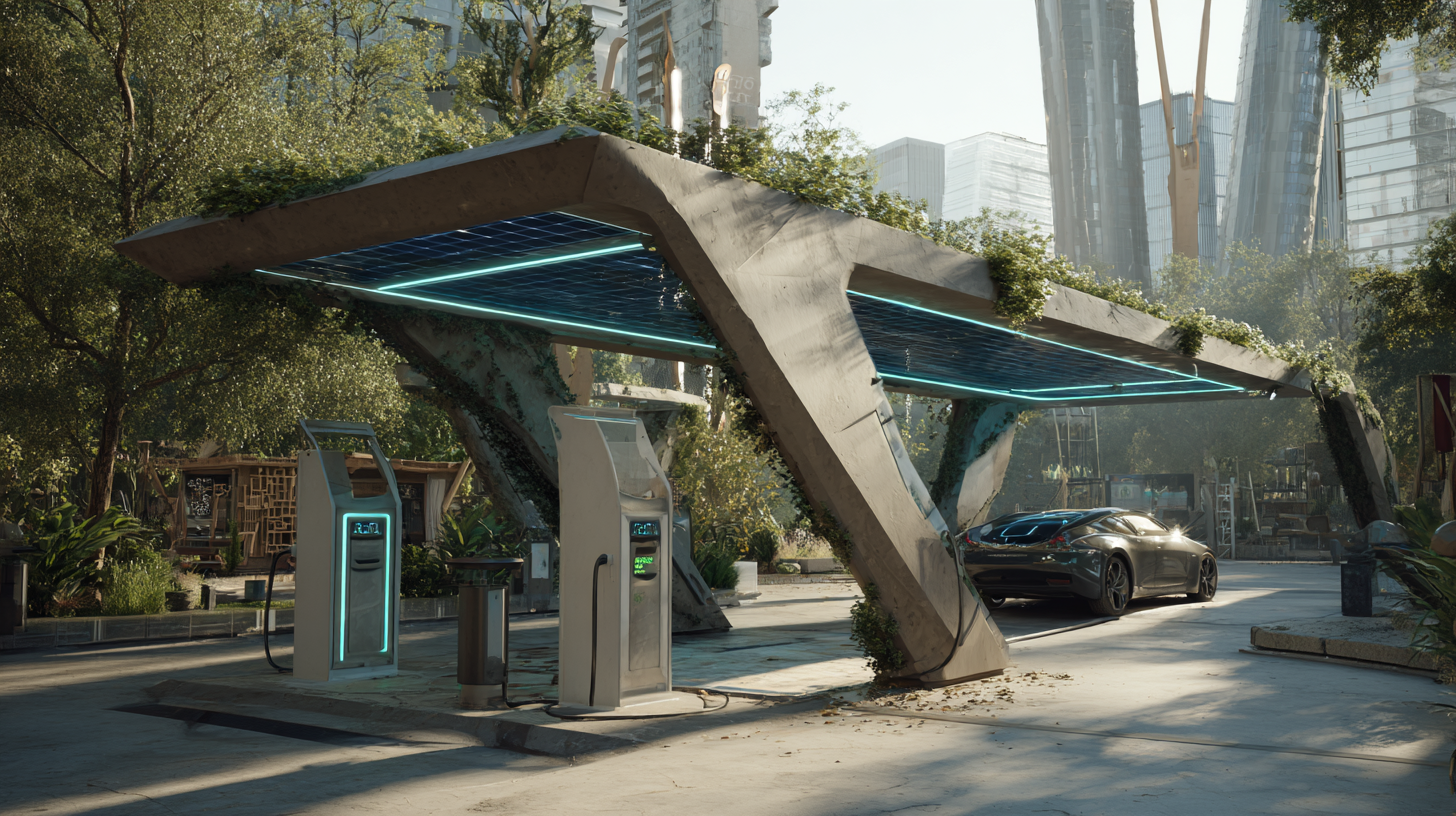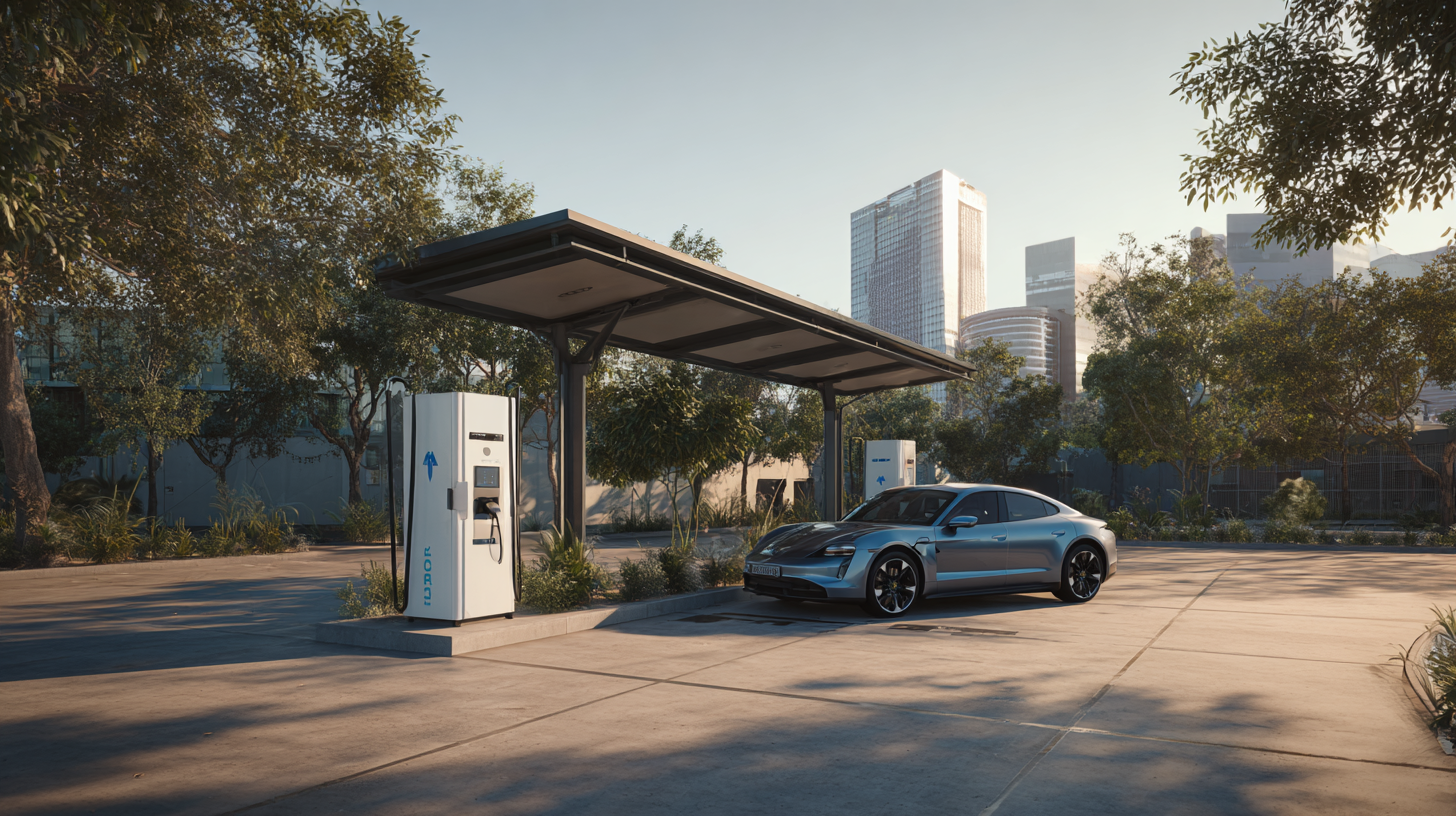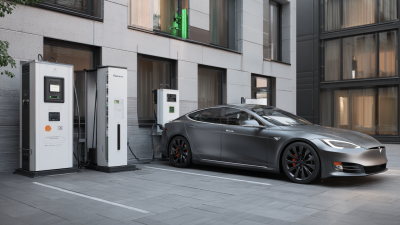
Wall Mounting EV Charge Station
Exploring the Future of Mobility: How EV Charging Stations Are Transforming Urban Landscapes
As urban areas continue to evolve, the emergence of electric vehicles (EVs) is catalyzing significant changes in transportation infrastructure and urban landscapes. A report by the International Energy Agency (IEA) indicates that the number of electric cars on the road surpassed 10 million in 2020, and this number is expected to reach 145 million by 2030, underscoring the urgent need for an expanded EV charging station network. This transformation not only aims to accommodate the growing demand for electric mobility but also to support cities' sustainability goals. According to a recent study by the Global EV Outlook, by 2040, the global charging stations required could range between 20 million to 30 million, emphasizing the pivotal role of EV charging stations in shaping modern urban infrastructure. As cities navigate the transition towards greener transportation solutions, understanding the implications of EV charging stations on urban planning and community dynamics becomes increasingly critical.

The Rapid Expansion of EV Charging Infrastructure in Major Cities
The rapid expansion of electric vehicle (EV) charging infrastructure in major cities marks a significant shift in urban mobility. According to a 2022 report from the International Energy Agency (IEA), the number of public EV charging points worldwide reached over 1.8 million, with urban centers leading the charge in adoption. This burgeoning network is not only facilitating the transition to green transportation but is also reshaping city infrastructure. For instance, cities like Los Angeles and London are investing heavily in charging stations, strategically placed in high-traffic areas to ensure accessibility and convenience for EV users.
Moreover, a study by McKinsey & Company highlights that by 2030, more than 30% of all cars sold in major urban markets are expected to be electric. To accommodate this surge in demand, city planners are rethinking space utilization, converting parking lots and underutilized areas into charging hubs. This transformation is poised to enhance urban landscapes, contribute to reduced emissions, and promote sustainable living. As urban populations grow, integrating extensive EV charging infrastructure will be crucial to ensuring efficient mobility solutions and aligning with global climate goals.
Exploring the Future of Mobility: How EV Charging Stations Are Transforming Urban Landscapes
| City | Total EV Charging Stations | Public Charging Stations | Private Charging Stations | Increase in Stations (2022-2023) |
|---|---|---|---|---|
| New York | 4,500 | 2,800 | 1,700 | 20% |
| Los Angeles | 6,200 | 3,500 | 2,700 | 25% |
| Chicago | 3,000 | 1,600 | 1,400 | 15% |
| San Francisco | 2,800 | 1,500 | 1,300 | 18% |
| Houston | 2,200 | 1,000 | 1,200 | 10% |
Impact of EV Charging Stations on Urban Real Estate Values
The rise of electric vehicles (EVs) is significantly reshaping urban landscapes, with EV charging stations playing a pivotal role in this transformation. As cities prioritize sustainability and emission reduction, the strategic placement of charging infrastructure has become crucial. Various studies indicate that properties located near EV charging stations are experiencing increased real estate values. This trend underscores a growing demand among homebuyers and renters for eco-friendly amenities, which bolster the appeal of urban properties.
 Moreover, the integration of EV charging stations into urban planning not only enhances property values but also spurs economic activity in the surrounding areas. Retailers and businesses situated near charging stations often experience a surge in foot traffic, directly impacting their revenue growth. Developers are now more inclined to incorporate EV infrastructure into their projects as a selling point, recognizing its influence on attracting environmentally-conscious consumers. This evolution in urban real estate emphasizes a collective shift towards a greener future, where the availability of EV charging stations is increasingly seen as an essential component of desirable urban living.
Moreover, the integration of EV charging stations into urban planning not only enhances property values but also spurs economic activity in the surrounding areas. Retailers and businesses situated near charging stations often experience a surge in foot traffic, directly impacting their revenue growth. Developers are now more inclined to incorporate EV infrastructure into their projects as a selling point, recognizing its influence on attracting environmentally-conscious consumers. This evolution in urban real estate emphasizes a collective shift towards a greener future, where the availability of EV charging stations is increasingly seen as an essential component of desirable urban living.
Case Studies: Successful Integration of Charging Stations in Urban Design
As urban areas increasingly adopt electric vehicle (EV) technology, the integration of EV charging stations within city landscapes has become a focal point for sustainable urban planning. Successful case studies reveal that strategically placed charging stations not only facilitate the transition to electric mobility but also enhance urban spaces. For instance, a report by the International Council on Clean Transportation indicates that cities with integrated charging infrastructure see a 25% increase in EV adoption rates compared to those without such facilities. San Francisco's commitment to green transportation exemplifies this trend; the city has deployed over 1,600 public charging stations, transforming parking lots and public spaces into accessible hubs for EV users.
Moreover, the incorporation of charging stations into urban design fosters community engagement and economic growth. A study by the Rocky Mountain Institute highlights that areas with charging stations often experience an uptick in foot traffic, benefiting local businesses. Cities like Amsterdam have showcased how charging stations can be seamlessly integrated into existing urban architecture, turning them into attractive elements that promote both sustainability and aesthetics. By reimagining how we think of mobility in urban settings, these case studies illustrate the potential for charging stations to contribute not only to cleaner air but also to dynamic urban ecosystems.
Analyzing the Economic Benefits of EV Charging Stations for Local Businesses
As electric vehicles (EVs) become increasingly popular, the proliferation of charging stations in urban areas is not only enhancing the convenience for EV owners but also creating significant economic opportunities for local businesses. By strategically placing charging stations in high-traffic areas, municipalities can attract a new wave of consumers who choose to shop, dine, or socialize while their vehicles recharge. This integration of EV infrastructure into urban planning can lead to increased foot traffic and longer dwell times, ultimately benefiting local commerce.
Furthermore, the presence of EV charging stations can serve as a catalyst for collaborative initiatives between businesses and city planners. Local companies, from cafes to retail stores, can capitalize on the growing EV market by offering promotions or discounts to customers charging their vehicles. This symbiotic relationship fosters a vibrant economic ecosystem where businesses thrive alongside sustainable transportation advancements. In addition, as EV adoption rises, businesses that embrace this trend early on can position themselves as environmentally conscious and innovative, appealing to a customer base increasingly concerned with sustainability.
Impact of EV Charging Stations on Local Business Revenue
This chart illustrates the average revenue increase for various types of local businesses after the installation of EV charging stations in urban areas. Notably, restaurants and coffee shops experience the most significant financial benefits, demonstrating how infrastructure for electric vehicles can enhance local economy.
Future Trends: Innovations in EV Charging Technologies and Their Urban Applications
The future of electric vehicle (EV) charging technologies is poised to transform urban landscapes significantly. With the EV charging station market anticipated to reach $28.74 billion in 2023 and forecasted to maintain a compound annual growth rate of 23.43% from 2024 to 2031, the advancements in charging technologies are critical. Innovations such as ultra-fast charging, wireless inductive charging, and smart grid integration are paving the way for more efficient and user-friendly charging experiences. These technologies not only enhance the convenience of EV ownership but also promote the adoption of electric vehicles by addressing one of the key barriers to entry: range anxiety.
As urban areas continue to evolve, the implementation of innovative charging solutions will reshape city planning and infrastructure. For instance, integrating charging stations into existing urban architecture, like parking lots and public spaces, can help seamlessly accommodate the growing demand for EVs. Furthermore, developments in charging module technologies are expected to boost the market significantly, with projections indicating a rise from $10.1 billion in 2025 to $79.28 billion by 2033. This growth aligns with the increasing sales of new energy vehicles, particularly in regions like China, where sales have surpassed 12.86 million units in 2024, marking a new era of sustainable transportation.

Related Posts
-

5 Reasons Why Ac Ev Chargers Are the Future of Sustainable Transportation
-

Embracing Innovation: The Future of EV Charger Stations for Sustainable Transportation
-

Ultimate Guide to Choosing the Right Ev Charger Station for Your Needs
-

Unlock the Future: How EV Charger Stations are Revolutionizing Sustainable Transportation
-

Ultimate Guide to Choosing the Best Ev Fast Charge Station for Your Business
-

7 Ultimate Benefits of Installing an EV Charger Station for Your Business

